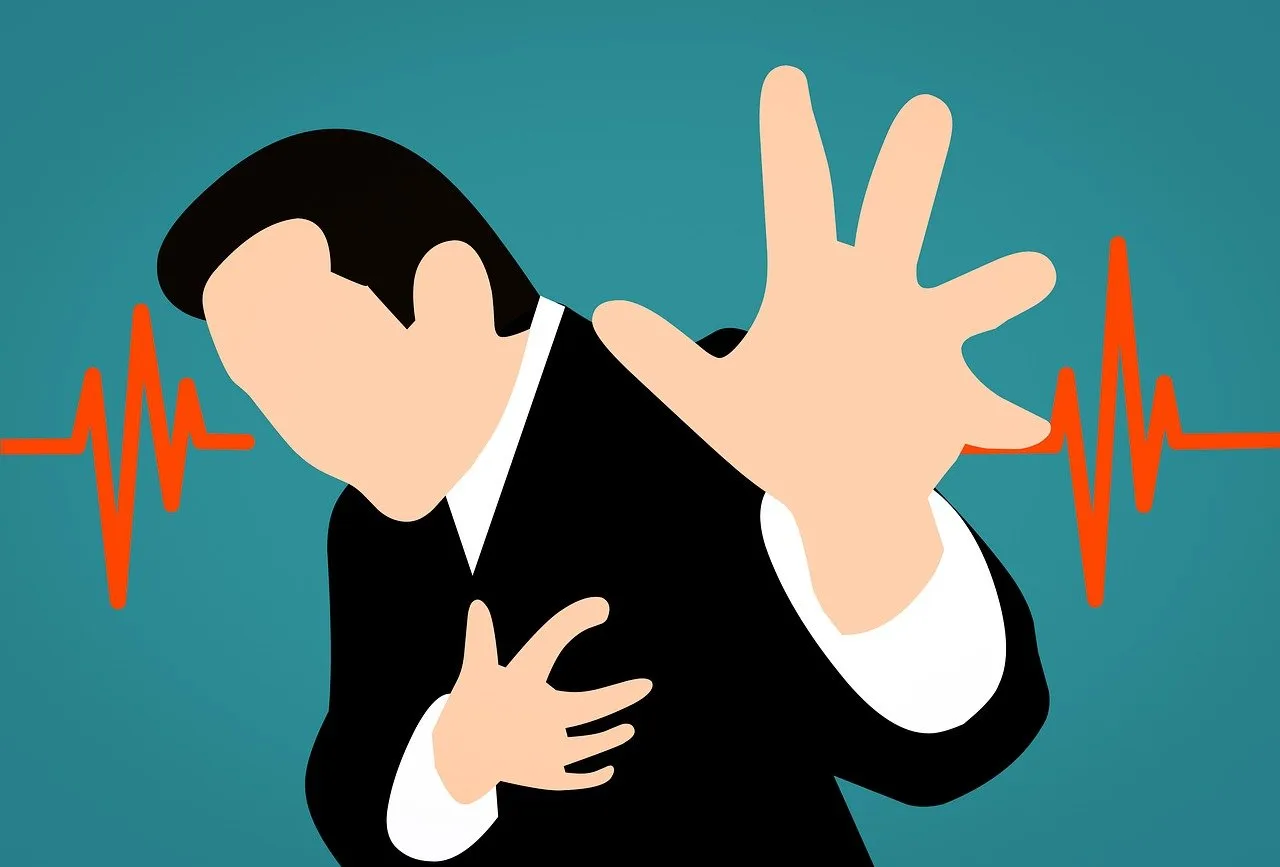<iframe width=”560″ height=”315″ src=”https://www.youtube.com/embed/sMqYwc9MLm0?si=NSTaGDiykHxcI1NU” title=”YouTube video player” frameborder=”0″ allow=”accelerometer; autoplay; clipboard-write; encrypted-media; gyroscope; picture-in-picture; web-share” allowfullscreen></iframe>
What is a Heart Attack?
Heart attacks, medically known as myocardial infarctions, are serious medical emergencies where the blood supply to the heart is suddenly blocked, typically by a blood clot. This blockage can lead to damage to the heart muscle, potentially causing life-threatening complications. The term “Widowmaker” heart attack refers to a specific type of heart attack that involves a 100 percent blockage of the left anterior descending (LAD) artery, one of the heart’s major arteries.
In this article, we aim to provide an in-depth understanding of heart attacks, covering aspects from symptoms and causes to diagnosis, treatment, and prevention strategies. Our focus will be on delivering accurate, medically-reviewed information to enhance awareness and promote heart health.
Common Symptoms
Heart attacks can present a range of symptoms, some of which are often mistaken for less severe conditions. Understanding these symptoms is crucial for timely recognition and treatment. Key symptoms include:
1.Chest Pain or Discomfort: Often described as a feeling of pressure, tightness, or squeezing in the center of the chest. This pain can last for more than a few minutes or may go away and come back.
2.Pain in Other Areas: This can include pain or discomfort in one or both arms, the back, neck, jaw, or stomach. This pain can vary in intensity and may feel different from person to person.
3.Shortness of Breath: This may occur with or without chest discomfort and can be a sign of heart distress.
4.Other Symptoms: Can include breaking out in a cold sweat, nausea, lightheadedness, or sudden dizziness.
It’s important to note that symptoms can vary between individuals. Some people, especially women, may experience less typical symptoms such as fatigue, shortness of breath without chest pain, and abdominal pain. The intensity of these symptoms can also vary, and in some cases, a heart attack may occur without any obvious symptoms, known as a ‘silent’ myocardial infarction.
Diagnosing Heart Attacks
Diagnosing a heart attack involves several key steps and tests to confirm the presence of a blockage in the coronary arteries. Timely diagnosis is critical for effective treatment. The following are standard diagnostic procedures:
Medical History and Physical Examination: Initial assessment includes a review of the patient’s symptoms, medical history, and a physical examination. This helps identify risk factors and symptoms indicative of a heart attack.
1.Electrocardiogram (ECG or EKG): This is the most critical initial test. An ECG records the heart’s electrical activity and can detect abnormal heart rhythms, areas of damage, and areas with reduced blood flow.
2.Blood Tests: Certain enzymes are released into the bloodstream when the heart is damaged. Blood tests can detect these enzymes, such as troponins, which are specific markers for heart muscle injury.
3.Imaging Tests: Various imaging tests like echocardiography, coronary angiography, or cardiac MRI may be used to assess heart function, identify blockages, and determine the extent of heart damage.
4.Stress Testing: This test involves exercising or taking medication to make the heart work hard and beat fast while heart tests are performed. It can show if there are any blockages in the coronary arteries.
5.Coronary Angiography: Often used in emergencies, this test involves using dye and X-rays to view the inside of the coronary arteries.
Early diagnosis and treatment are vital to minimize heart damage and improve outcomes. Delay in treatment can lead to significant damage to the heart muscle, potentially leading to heart failure and other complications.
Duration and Course
The duration and course of a heart attack can vary significantly from one individual to another. Understanding these variations is essential for recognizing the severity of the situation and the urgency of medical intervention.
1.Onset: The symptoms of a heart attack may have a sudden onset, occurring without warning, or they may develop gradually over hours, days, or even weeks.
2.Duration of Symptoms: Typically, heart attack symptoms last for at least 15 minutes and can persist for several hours. Unlike angina pain, which often subsides with rest or medication, heart attack pain usually continues despite these measures.
3.Progression of Damage: The longer the heart muscle is deprived of oxygen-rich blood, the greater the damage to the heart. This is why immediate medical attention is crucial. The first few hours are particularly critical as prompt treatment can often save heart muscle and improve survival rates.
4.Recovery Phase: Recovery after a heart attack varies based on the extent of the heart damage and the overall health of the individual. It can range from weeks to months. Cardiac rehabilitation, a program that includes exercise, education, and counseling, is often recommended to aid recovery.
5.Long-term Course: The long-term effects of a heart attack can include heart failure, arrhythmias (irregular heartbeats), an increased risk of another heart attack, and psychological effects such as depression or anxiety. Ongoing medical care, lifestyle changes, and, in some cases, surgery, can help manage these conditions.
Understanding the duration and course of a heart attack is vital for both patients and healthcare providers to anticipate the need for long-term management and rehabilitation.
Prevention Strategies
Preventing a heart attack involves a combination of lifestyle changes, medical interventions, and awareness of risk factors. Effective prevention strategies include:
1.Healthy Lifestyle Choices:
Diet: Eating a heart-healthy diet rich in fruits, vegetables, whole grains, lean proteins, and low in saturated fats, cholesterol, and sodium can reduce heart disease risk.
Exercise: Regular physical activity strengthens the heart and improves overall cardiovascular health. Aim for at least 150 minutes of moderate aerobic activity or 75 minutes of vigorous activity per week.
Weight Management: Maintaining a healthy weight helps reduce the risk of heart disease and other related health issues.
2.Managing Health Conditions:
Blood Pressure Control: High blood pressure is a significant risk factor for heart disease. Regular monitoring and appropriate treatment are essential.
Cholesterol Management: High levels of cholesterol can clog arteries and lead to heart disease. Diet, exercise, and medication can help manage cholesterol levels.
Diabetes Management: Diabetes significantly increases the risk of heart disease. Controlling blood sugar levels is crucial for heart health.
3.Avoiding Tobacco and Limiting Alcohol: Smoking and excessive alcohol consumption are major risk factors for heart disease. Quitting smoking and limiting alcohol intake can markedly reduce heart attack risk.
4.Regular Health Screenings: Regular check-ups and screenings for cholesterol, blood pressure, and other potential risk factors are important for early detection and prevention.
5.Stress Management: Chronic stress may contribute to heart disease. Techniques like meditation, deep breathing, and exercise can help manage stress.
6.Medication: For individuals at high risk, medications such as aspirin, statins, or other heart medicines can play a role in prevention.
Implementing these strategies requires a combined effort from individuals, healthcare providers, and public health initiatives. While some risk factors like age and family history can’t be changed, adopting a healthy lifestyle and managing existing health conditions can significantly reduce the risk of a heart attack.
Available Treatment Options
Treatment for heart attacks aims to restore blood flow to the heart, minimize heart muscle damage, and prevent complications. The choice of treatment depends on the type of heart attack and how long it’s been since the symptoms began. Key treatment options include:
1. Medications:
Thrombolytics: Also known as clot busters, these drugs help dissolve a blood clot that’s blocking blood flow to the heart.
Antiplatelet Agents: Medications like aspirin reduce blood clotting, helping to keep arteries open.
Beta Blockers: These reduce heart workload and lower blood pressure.
ACE Inhibitors: Help relax blood vessels and reduce heart strain.
Statins: Lower cholesterol levels and stabilize plaque in the arteries.
2. Coronary Angioplasty and Stenting: This procedure involves using a balloon to open blocked coronary arteries. A stent (a small wire mesh tube) is often placed in the artery to keep it open.
3. Coronary Artery Bypass Grafting (CABG): In this surgery, a blood vessel from another part of the body is grafted to the blocked artery, allowing blood to bypass the blocked area.
4. Lifestyle Modifications Post-Treatment: After a heart attack, lifestyle changes are crucial for recovery and prevention of future attacks. This includes a heart-healthy diet, regular exercise, quitting smoking, and stress management.
5. Cardiac Rehabilitation: A medically supervised program that includes exercise training, health education, and stress reduction techniques. It’s designed to improve health and recovery after a heart attack.
6. Monitoring and Follow-Up Care: Regular follow-up appointments with a healthcare provider are essential to monitor recovery and manage risk factors.
Quick and effective treatment not only saves lives but also reduces the risk of complications such as heart failure and arrhythmias. Post-treatment, ongoing management of heart health is vital for preventing future heart attacks and maintaining quality of life.
Seeking Professional Help
Recognizing when to seek professional help is crucial in the context of heart attacks, as timely medical intervention can significantly improve outcomes. Here’s what to consider:
1. Recognizing Emergency Symptoms: Understanding the symptoms of a heart attack is essential. Chest pain, discomfort in other areas of the upper body, shortness of breath, and other symptoms like nausea or lightheadedness warrant immediate medical attention.
2. Calling Emergency Services: If you or someone else exhibits symptoms of a heart attack, call emergency services immediately. Fast action can save lives. It’s crucial not to drive to the hospital but wait for an ambulance, as medical professionals can start life-saving treatment en route.
3. Regular Check-Ups for High-Risk Individuals: Those with risk factors such as a family history of heart disease, high blood pressure, high cholesterol, diabetes, or a smoking habit should have regular check-ups with their healthcare provider.
4. Post-Heart Attack Care: Follow-up care is vital after a heart attack. This includes regular visits to a cardiologist, adhering to prescribed medications, and possibly participating in a cardiac rehabilitation program.
5. Psychological Support: The emotional and psychological impact of a heart attack can be significant. Seeking support from mental health professionals, support groups, or counseling can be beneficial in coping with the stress and emotional aspects of recovery.
6. Education and Awareness: Educating oneself about heart disease, risk factors, and healthy lifestyle choices is important for both prevention and post-attack care.
Prompt professional medical help can not only be lifesaving during a heart attack but also plays a crucial role in the long-term management and prevention of future cardiac events.
Health Predictions
Health predictions in the context of heart attacks focus on forecasting the likelihood of occurrence, potential advancements in treatment, and trends in heart health. These predictions are important for guiding future healthcare strategies and individual health decisions. Key areas include:
1. Risk Assessment Technologies: Advances in medical technology, like AI and machine learning, are being used to develop more accurate models to predict heart attack risks based on genetics, lifestyle factors, and health data.
2. Advancements in Treatment: Ongoing research and development in cardiology promise more effective and less invasive treatments. This includes improved medications, advanced surgical techniques, and innovative therapies like gene and stem cell therapies.
3. Public Health Initiatives: Predictions indicate a continued emphasis on public health campaigns to promote heart health. These initiatives focus on education about diet, exercise, smoking cessation, and regular health screenings.
4. Personalized Medicine: The future of heart attack treatment and prevention may increasingly rely on personalized medicine, offering treatments and prevention strategies tailored to individual genetic profiles and risk factors.
5. Lifestyle Trends Impacting Heart Health: Trends in lifestyle, such as increasing sedentary behavior and poor dietary habits, predict a potential rise in heart disease. Conversely, growing awareness and adoption of healthier lifestyles could mitigate this risk.
6. Global Health Trends: Predictions about the global burden of heart disease suggest it will continue to be a leading cause of death worldwide, necessitating concerted global efforts in prevention and treatment.
Understanding these predictions helps in preparing for future challenges in heart health and emphasizes the importance of ongoing research, public health policies, and individual commitment to heart-healthy practices.





